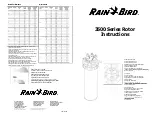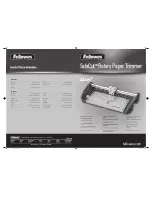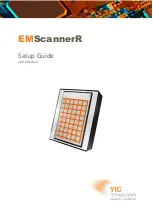
TC6
®
System Descriptions
3-7
The motor has three Hall-effect sensors internally mounted to
generate pulses as the motor turns. These pulses are monitored by
the MC33035 allowing the controller to change the width of the
pulse sent to the motor drive to control the speed. The wider the
pulse, the faster the motor runs.
The sensors are also used to generate a pulse string for the speed
indicator. MC33039 generates 12 pulses for each revolution of the
motor.
3-6. Timer
Theory of Operation
The timer consists of a crystal controlled oscillator and a variety of
"HC" (High speed Complementary metal oxide semiconductor)
logic circuitry operating on 5 Vdc. When the timer elapses to zero,
the rotor motor begins to brake.
If
HOLD
mode is selected, the timer is disabled and the centrifuge
continues to run until the operator presses the
STOP
switch to end
the run.
3-7. Door Latching Mechanism
Theory of Operation
The door closing/locking mechanism is a latch, secured to the
underside of the frame; a striker, secured to and extending through
the chamber door; a latch release activated by a solenoid; a door
closure sensor; and a door release button. Door open/close position
is monitored by a magnetic switch.
The circuitry that controls the door latch solenoid is on the Control
Printed Circuit Board. When the door open switch is closed, the
solenoid is energized for less than one second no matter how long
the switch is held. It consists of logic gate controls and solenoid
driver circuits. The logic controlling the door release solenoid must
meet all of the following conditions before the door open switch
will operate:
•
door closed
•
timer not active
•
low speed (less than 90 rpm).
The Latch solenoid cannot be energized when rotor speed is more
than 62 rpm.
3-7/3-8
Summary of Contents for TC6
Page 101: ...Illustrated Parts SORVALL Centrifuges 8 2 Figure 8 1 TC6 Main Assembly ...
Page 103: ...Illustrated Parts SORVALL Centrifuges 8 4 Figure 8 2 TC6 Chassis Assembly ...
Page 105: ...NOTES ...
Page 106: ...NOTES ...
Page 107: ...NOTES ...
Page 108: ...NOTES ...
















































